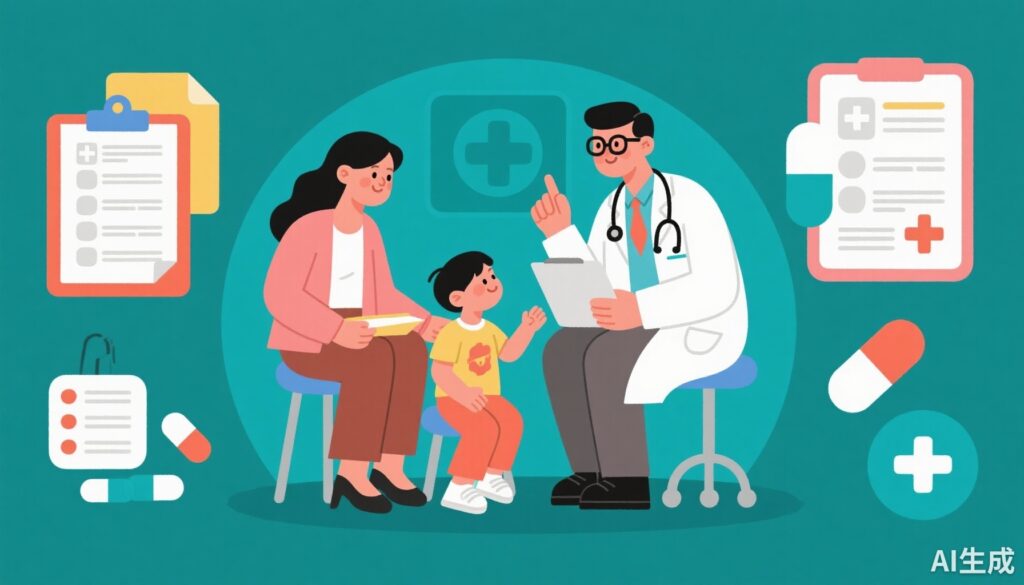Introduction
Attention-deficit/hyperactivity disorder (ADHD) is a neurodevelopmental disorder characterized by persistent patterns of inattention, hyperactivity, and impulsivity. It is among the most common mental health conditions diagnosed in childhood, with significant implications for social, emotional, and academic functioning. Early diagnosis and intervention are critical for optimizing developmental trajectories and reducing long-term adverse outcomes. Clinical guidelines recommend first-line behavioral interventions for young children, especially those aged 4 to 5 years, before considering medication therapy. However, real-world practices may vary, and understanding these patterns is essential for informing clinical and policy decisions.
Study Background
Despite guidelines advocating for cautious pharmacological management in preschool-aged children, recent data suggest that many young children are diagnosed and initiated on medication soon after diagnosis. Disparities in access to care, racial and socioeconomic factors, and institutional practices may influence these patterns. The study by Bannett et al. utilizes a large, multicenter electronic health record (EHR) cohort to assess the rates of ADHD diagnosis, medication prescribing, and the timing of medication initiation among children aged 3 to 5 years across diverse US pediatric health systems.
Study Design
This retrospective cohort study analyzed data from the PEDSnet Clinical Research Network, encompassing eight academic-affiliated pediatric primary care practices. The population included children aged 3 to 5 years seen between 2016 and 2023, with data extracted as of April 18, 2025. The exposure of interest was an ADHD diagnosis at age 4 to 5 years.
Main outcomes included: (1) the rate of ADHD diagnosis among the cohort, (2) the rate of stimulant and non-stimulant medication prescriptions following diagnosis before age 7 years, and (3) the time interval from first ADHD diagnosis to medication prescription. Independent variables incorporated demographic characteristics, institutional factors, and clinical comorbidities. Multivariable Cox proportional hazards models assessed associations between these variables and the timing of medication initiation.
Key Findings
Of the 712,478 children aged 3 to 5 years who visited primary care clinics within these systems, 9,708 (1.4%) received an ADHD diagnosis at age 4 to 5 years, with the median age at diagnosis being 5.31 years. The prevalence varied across institutions, from 0.5% to 3.1%. Among children diagnosed, 68.2% (n=6,624) were prescribed ADHD medications before age 7, and 42.2% (n=4,092) received such medications within 30 days of diagnosis.
Disparities emerged in the timing of medication prescriptions based on race and ethnicity. Asian, Hispanic, and Black children with ADHD were less likely to be prescribed medications early compared to White children, with adjusted hazard ratios of 0.51, 0.75, and 0.88 respectively. Conversely, older children, males, and those with public insurance were more likely to receive early treatment, with hazard ratios of 1.62, 1.17, and 1.09 respectively.
The variation across institutions and demographic groups underscores the influence of access, cultural perceptions, and institutional practice patterns. The finding that many children receive medication soon after diagnosis raises questions about adherence to guidelines emphasizing behavioral interventions first, particularly for preschool-aged children.
Expert Commentary
This large-scale study highlights ongoing challenges in aligning clinical practice with evidence-based guidelines for early childhood ADHD management. The disparities by race and insurance status suggest potential healthcare inequities, which warrant targeted policy and practice interventions. The rapid initiation of medication post-diagnosis may reflect clinician or parental preferences, or systemic factors such as resource availability for behavioral therapies.
Limitations include potential misclassification of diagnoses or treatments in EHR data and the inability to fully assess the appropriateness of medication choices or the extent of behavioral intervention use. Further research should explore the qualitative aspects of decision-making and long-term outcomes associated with early pharmacological treatment.
Conclusion
This multicenter retrospective analysis reveals that a substantial proportion of preschool children diagnosed with ADHD are prescribed medications shortly thereafter, often within 30 days. The observed demographic disparities and institutional variation highlight the need for ongoing efforts to promote guideline-concordant care, ensure equitable access to behavioral interventions, and understand the factors influencing early medication use. Addressing these issues can improve the quality of ADHD management in early childhood and mitigate potential adverse effects of premature pharmacotherapy.
Funding and ClinicalTrials.gov
This study was supported by data from the PEDSnet initiative, a network funded by multiple NIH grants. No specific clinical trial registration applies.
References
1. Bannett Y, Luo I, Azuero-Dajud R, Feldman HM, Brink FW, Froehlich TE, Harris HK, Kan K, Wallis KE, Whelan K, Spector L, Forrest CB. ADHD Diagnosis and Timing of Medication Initiation Among Children Aged 3 to 5 Years. JAMA Netw Open. 2025 Aug 1;8(8):e2529610.
2. American Academy of Pediatrics. Clinical Practice Guideline for the Diagnosis, Evaluation, and Treatment of Attention-Deficit/Hyperactivity Disorder in Children and Adolescents. Pediatrics. 2011;128(5):1007-1022.
3. Centers for Disease Control and Prevention. Data & Statistics on ADHD. 2023.
4. Swanson JM, et al. Effective Treatment for ADHD in Children. Journal of Clinical Psychiatry. 2019;80(2):19r13042.



